Syn.: Hypopitys uniflora (L.) Crantz, Monotropa australis Andres, Monotropa brittonii Small, Monotropa coccinea Zucc., Monotropa morisoni Pers., Monotropa morisoniana Michx.
Family Ericaceae Juss.
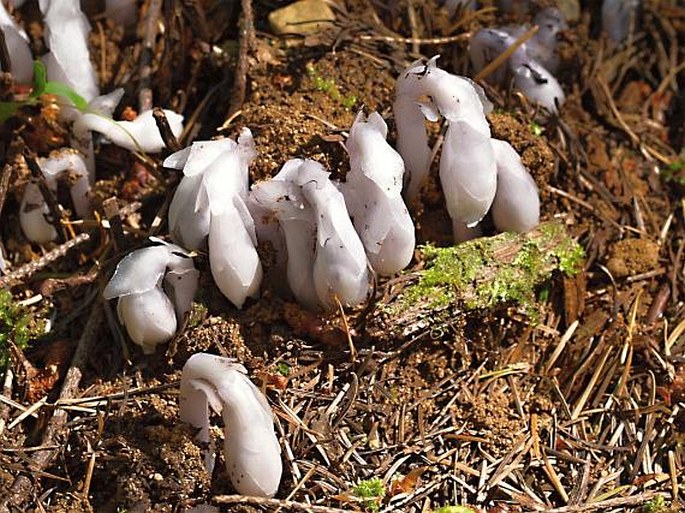
Distribution: Eastern Asia, from northern Pakistan, India, China, Korea to Japan and in Americas, from southern Canada to California, along Mississippi River, from Maine to Florida. Also found throughout Central America and reaching Colombia.
Ecology: Moist, shaded woods and forests in acidic humus soils, rich in decaying organic matter, from foothills to subalpine. Blooms in July and August.
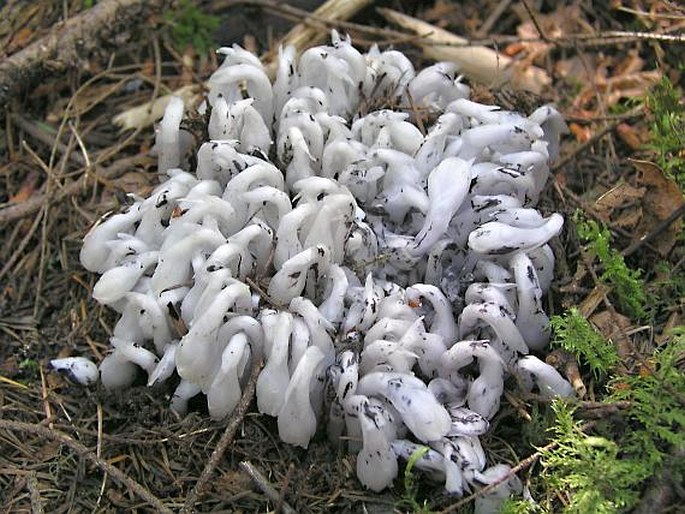

Description: Perennial herb. Stems waxy-white, 5–30 cm tall, clustered, lacking chlorophyll, saprophytic, turning brown to black with age, from fleshy roots. Leaves alternate, scale-like, white, linear to ovoid, less than 1 cm long, sessile. Flowers waxy-white, hairy inside, solitary, terminal, nodding when young, erect when mature, narrowly bell-shaped, 1.5–2 cm long, 5 fleshy petals, turning brown with maturity, 2–4 bract-like sepals, 10 stamens, 1 pistil. Fruit is a capsule, erect, brown, 6 mm long, splitting along sides into 5 segments.
Use: Cree tribe chewed the flowers as a remedy for toothaches. Boiled or roasted, this plant taste somewhat like asparagus.

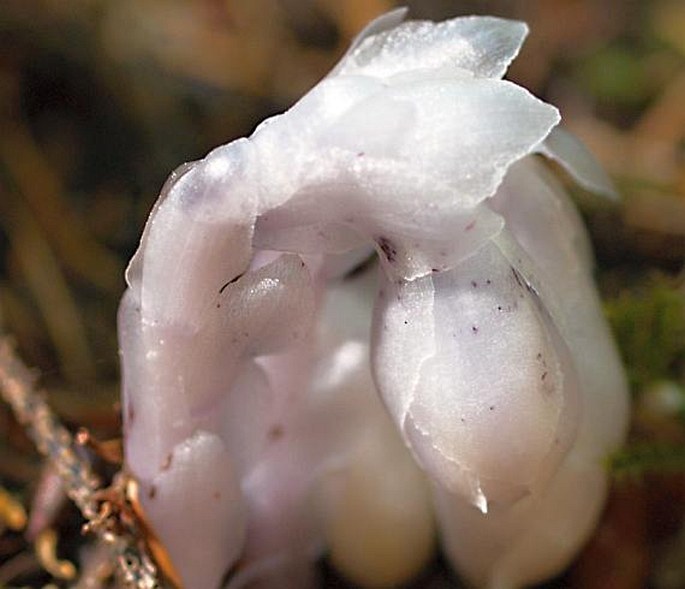
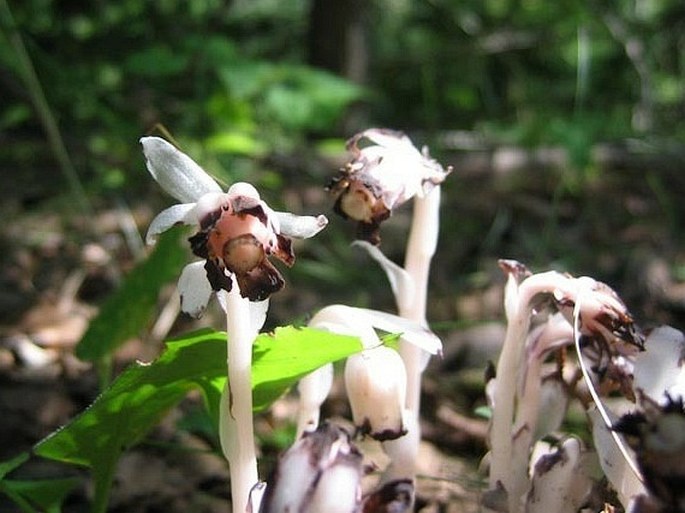
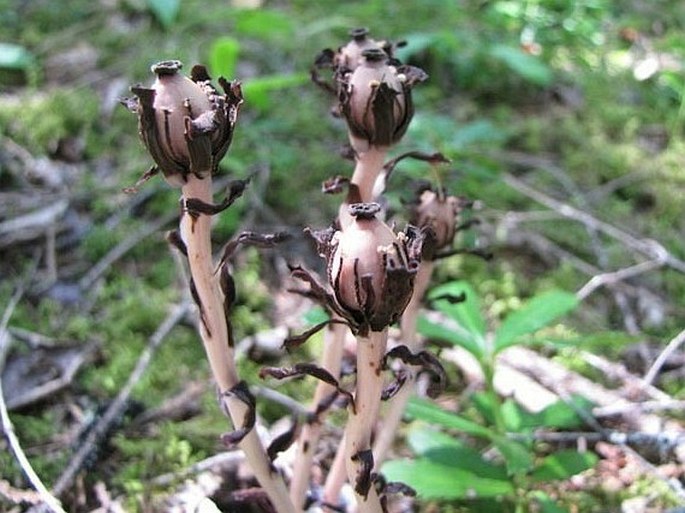

These images were taken in Canada, British Columbia, Burton (by Karel Bergmann, September 2005), and Canada, British Columbia, Vancouver Island, Elk Falls Provincial Park (by Alena Vydrová and Vít Grulich, July 11, 2007).


